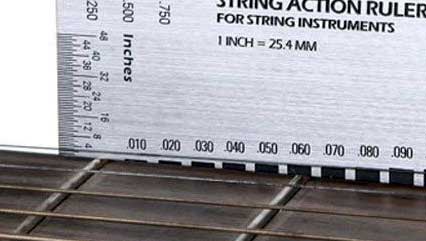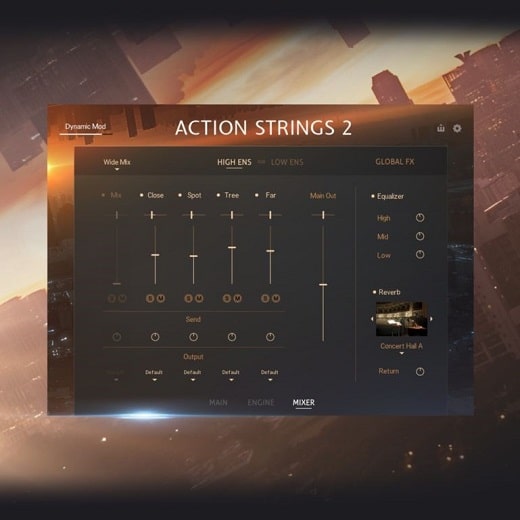

Then, use a free finger to feel for a gap under the string. As a straight edge press 1 string down at the first fret and press the same string down at the last fret. If you don't have a straight edge, you can use the guitar string itself. I use this precision straight edge to check for straightness across the top of each fret and down the length of the neck. I can say that too much relief will make the guitar feel a little stiff and can affect your intonation. Some people like a little bit of relief if they have a heavy playing attack or just to give a little breathing room on a big bend. If your action is too slow, the moving string will touch the fret tops. Or, it could be upbow, which is also called relief. It could have backbow which is typically, a bad thing. The neck might be straight from end to end. It's a little stiff toward the bass side but it's very playable. On the bass side, it's a little bit stiff and the nut is pretty good at the first fret. On this particular guitar, playing it up and down the neck on the treble side it feels really good. What do you like? What don't you like? Does the guitar play stiff like you're working too hard to fret a note? Is the action too low? Are you getting fret buzz if you bend a note? Is it fretting out? These are all things you're going to want to consider. Make sure it's in the tuning you play in and has your preferred set of strings on it because the gauge string you choose will affect your action and your setup. Before we go too far and start measuring things, let's take a minute to consider how the guitar plays and feels. The two places you check and measure your action are at the first fret and at the 12th fret. Watch and see whether you want to try it yourself or send it to a repair shop. But, if you're patient and careful, you can do it and it doesn't take a lot of tools to accomplish. Adjusting the action on an acoustic guitar can be more involved that an electric guitar. In this case, I want to be lowering the action.
#High action strings how to
Then, I'll show you how to change the action on an acoustic guitar. I'm going to show you how to check your action and that's something that anybody can do. And, if it's really high, you could be affecting your intonation. You might be having to work a little harder on your fretting hand than you need to. If your action is too low and you have a heavy picking hand, you have a good chance you might get a fret buzz if your action is too high.

Typically, they might like a slightly higher action because they have a heavier attack whereas, a finger-style player playing on a lighter gauge of strings might like it a little lower and have a really delicate touch on their picking hand. For example, flat pickers and bluegrass players have heavier strings. The style of music you play might influence your decision. Style of music influences preferred action You might like it higher or you might like it lower. Action affects how the guitar plays, feels, and sounds. We're telling you about the distance between the top of the fret and the bottom of the string. When we're talking about action or string action. How to adjust the action on an acoustic guitar


 0 kommentar(er)
0 kommentar(er)
